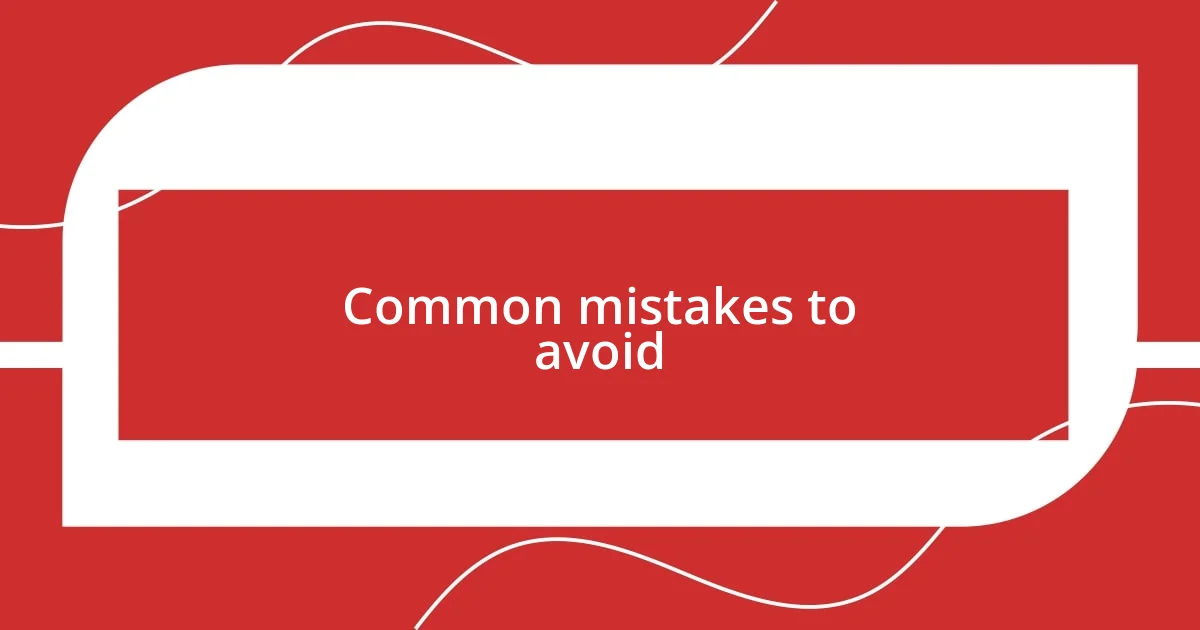Key takeaways:
- Art critiques serve as a platform for dialogue, fostering personal growth and diverse perspectives on artistic work.
- Constructive criticism emphasizes actionable feedback, encouraging artists to explore and evolve their techniques and creative approaches.
- Developing a personal critique style involves integrating emotional insights and storytelling, enhancing connection and understanding between artists and their work.

Understanding art critiques
Art critiques can be a deeply enriching experience, both for the artist and the viewer. When I first attended a critique session, I was surprised by how vulnerable I felt as I presented my work. Isn’t it nerve-wracking to expose your creations to scrutiny? But in that exposure lies an opportunity for growth.
Understanding the nuances of art critiques involves recognizing that feedback can be subjective. I remember a particular instance where a piece I was proud of received mixed reactions. One viewer found it profound, while another described it as confusing. Reflecting on their comments made me realize that art speaks differently to everyone. How often do we forget that our perspective is just one part of a larger conversation?
Ultimately, art critiques are not just about judgment; they serve as a platform for dialogue and exploration. The depth of insights shared can trigger fascinating discussions and push the boundaries of my artistic practice. When was the last time someone’s critique changed how you view your own work? It’s in that transformative power of dialogue that I’ve found my passion for creating has flourished.

Importance of receiving feedback
Receiving feedback is like unlocking a door to a new dimension of understanding in my art. I’ve often found that when viewers share their thoughts, I discover layers within my work I hadn’t noticed before. For instance, during one critique, a fellow artist pointed out the emotional tension in my piece that I had intended to convey, but hadn’t realized was so palpable. That revelation ignited a spark in me, encouraging me to dive deeper into the emotions I want to portray.
Here are a few reasons why feedback is so vital in the creative process:
– It unveils hidden aspects of my work.
– It fosters a sense of community and shared learning.
– It encourages me to view my art from different perspectives.
– It can affirm my intentions or push me to challenge them.
– It fuels personal growth and artistic evolution.
Overall, feedback acts as a catalyst, propelling my artistic journey forward and inviting me to explore uncharted territories.

Constructive criticism in art
Constructive criticism shapes the essence of my creative journey. I recall a critique where a colleague noted that my use of color felt disjointed. At first, I was taken aback, but as I reflected on their point, I understood it as a chance to experiment further with harmony and contrast. It’s incredible how a single comment can linger in my mind, urging me to evolve my understanding of color relationships.
What’s particularly fascinating about constructive criticism is the emphasis on actionable feedback. During another session, someone suggested enhancing the texture in my painting to better evoke the subject’s emotion. By taking that advice to heart, I began exploring new techniques that not only improved that piece but also enriched my entire approach to texture. Have you ever experienced a moment where someone’s suggestion completely shifted your artistic direction?
Ultimately, constructive criticism acts not only as a guide but also as a form of collaboration. When I engage with feedback, I invite others to see my work through their eyes, creating a dialogue that can transform my pieces in unexpected ways. This communal aspect is what makes art so special; we learn from one another and grow together as artists.
| Aspect | Constructive Criticism |
|---|---|
| Purpose | To encourage growth and improvement |
| Approach | Focus on specific, actionable feedback |
| Emotional Impact | Can initially feel intimidating, but fosters resilience |
| Outcome | Enables deeper exploration of one’s artistic vision |

How to interpret critiques
When interpreting critiques, it’s essential to approach them with an open mind. I remember a time when a reviewer described my work as overly busy, which initially felt like a punch to the gut. But upon reflecting, I realized it was a valuable reminder to simplify and focus on what truly matters in my compositions. How often do we get lost in details, forgetting the bigger picture?
Another point to consider is emotional reception—how does the critique make you feel? During one critique, a peer’s feedback felt harsh at first, but then it led me to a deeper understanding of my work. It was a jarring moment that prompted introspection. I began to see that not all critiques will resonate or feel good, but each one can lead to growth if you allow yourself to feel and process those emotions.
Finally, context matters. When I received feedback on a piece that was personal and raw, the reaction helped me see the importance of understanding the viewer’s perspective. It reminded me that art is a conversation; we must consider how our audience interprets our intentions. Have you noticed how feedback can sometimes challenge or reinforce your artistic choices? Balancing personal connection with external perspectives can truly elevate your work.

Applying feedback to improve
I find that applying feedback effectively is like a game of chess; it requires patience and strategy. There was a time when a mentor pointed out that my compositions often lacked focal points, leaving the viewer unsure of where to look. Initially, I felt defensive, but I decided to use this observation as a guide. By intentionally defining focal areas in my next piece, I noticed not just an improvement in clarity, but a newfound connection with my audience. Have you tried re-evaluating your focal points after receiving similar feedback?
When it comes to taking constructive criticism to heart, I always remind myself to embrace a growth mindset. A while back, I received feedback on my use of negative space. A fellow artist challenged me to explore it further in my work, and this pushed me out of my comfort zone. As I started experimenting, I discovered how negative space could elevate my subjects, bringing them to life in a way I hadn’t anticipated. Have you ever found that exploring a single element deeply changed your overall approach?
Incorporating changes based on feedback doesn’t mean losing sight of my original vision; rather, it enhances it. I remember revisiting an older piece after a critique suggested a more cohesive color palette. Integrating this feedback didn’t overshadow my initial intent but rather breathed new life into it. I learned that art evolves, much like us, and adapting to feedback is a vital part of that journey. How do you feel when you see your work transform with every suggestion you integrate?

Common mistakes to avoid
One of the most common pitfalls I’ve encountered is taking critique too personally. I remember a time when a fellow artist pointed out the lack of depth in my color choices. At first, I was disheartened; it felt like they were criticizing me rather than my work. However, I soon understood that separating my identity from my art is crucial. Keeping this distinction in mind can make critiques feel less like personal attacks and more like constructive tools for growth. Have you ever let feedback haunt you, only to realize later that it was meant to enhance your journey?
Another mistake to watch for is dismissing feedback because it doesn’t align with your style. I had a mentor once who challenged my penchant for stark contrast, suggesting I experiment with subtle gradations. My initial reaction was to disregard this advice, convinced that my approach was unique. Yet, when I finally tried it, I found a beautiful nuance in my pieces that I hadn’t recognized before. Ignoring differing perspectives can prevent us from discovering fresh artistic avenues. So, what if a divergence from your typical style could unlock new creativity?
Lastly, I often see artists hesitate to ask clarifying questions during critiques. There was an instance when I received vague feedback that left me puzzled. Instead of probing for specifics, I let it linger, and as a result, I missed a valuable opportunity to grasp the core of the critique. Engaging in dialogue and asking questions not only shows initiative but also helps clarify the intent behind the comments. Have you considered how a simple question could turn a critique into an enlightening conversation, one that enhances your understanding and broadens your horizon?

Developing a personal critique style
Developing a personal critique style is a journey that reflects our unique artistic voice. I vividly recall my early attempts at critiquing my peers’ work; my commentary was often too technical and devoid of emotion. It wasn’t until I realized the power of personal insights that my critiques began to resonate more. How often do you allow your feelings about a piece to inform your analysis?
I’ve learned to weave storytelling into my critiques, which allows me to connect with the artist on a deeper level. For instance, after viewing a friend’s abstract painting, I shared how it reminded me of a chaotic yet beautiful summer storm—this sparked a conversation about her inspiration and choices. By sharing my perceptions and emotions, I found that the critique became a dialogue rather than just a review. Have you considered how personal context can enrich your feedback?
One of the most enlightening aspects of developing my critique style has been embracing vulnerability. I now openly share my struggles with similar concepts in my own works when offering feedback. For instance, I empathized with an artist on their fear of color choices, recalling my own anxieties about a recent piece that stayed safe with neutrals. This openness created a trust that enriched our discussion significantly. How do you let your own artistic journey influence the critiques you give and receive?















